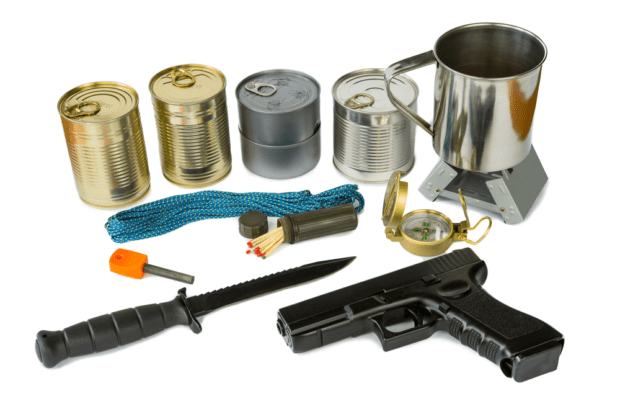5 Things You Need in Your Emergency Kit

If disaster strikes, do you know what you’ll need to survive? It’s not an easy question to answer, but it’s one that could mean the difference between life or death if the worst were to happen. But putting together an emergency kit doesn’t have to be that difficult. Five simple essentials can form as the staples for your emergency kit and provide you with most of the materials you’ll need to hunker down and survive a natural disaster as comfortably as possible.
- Water
Water isn’t exactly hard to come by in our everyday life, but water that’s safe to drink can be a serious scarcity in the wake of a disaster. That’s why it’s important to keep water that’s commercially bottled and unopened in your disaster kit. As a general rule of thumb, you’ll want to keep a gallon of water for everyone in your household per day. For shelter at home conditions, you’ll want at least two weeks worth of water. If the disaster forces you to evacuate, you’ll want to make sure that your mobile disaster kit includes at least three days of fresh and sanitary water.
- Food
Chances are that you have a three-day supply of food in your home already, but that doesn’t mean it’s going to do you any good in the case of an emergency. So much of our groceries are dependent on refrigeration and aren’t exactly portable. That’s why you’ll need a separate stash for your emergency kit. Make sure to keep at least a three-day supply set aside, and account for everyone in the home. You’ll want to focus your attention on non-perishables. Canned goods are one of the best choices because of their long shelf life, but they can also be unwieldy. Periodically rotating your food when it expires and keeping them dry and at a mild temperature is important if you want your food to actually be usable in the case of an emergency.
- Heat and Light
In the case of a major emergency, the utilities we consider basic necessities become moot. The amount of heat you need will really depend on the climate where you live, but hand warmers and a couple of heavy blankets should be considered an essential in practically any emergency kit. Similarly, make sure to carry a flashlight, candles, matches, and extra batteries. You can never be too safe when you’re caught in a situation without power. Don’t overlook the little things either.
- First Aid Kit
Simply stopping by an emergency clinic might not be an option in the case of an emergency, and you might not even have access to your medicine cabinet. Rather than making a first aid kit yourself, we recommend you buy one pre-made. They cover all the basics for what you’d need for basic injuries and illnesses, and they’re incredibly compact. But be sure to keep your family’s personal needs in mind as well. You should always have a stock of critical prescriptions put aside for easy access in your emergency kit.
- Basic Tools
There are a few basic tools that can make your life easier when you’re forced to shelter in place. A basic wrench or set of pliers can be used to turn off your utilities, and you should be sure to keep a manual can opener in your kit so you can actually get to the food you have stowed away. Finally, consider some essential tools for communication. A crank radio can help you stay tuned in to the news even if the power is out, and a spare phone battery can provide you with the means to get in touch with the outside world for longer.
